The first dog in space and all that followed: the touching story of four-legged astronauts
19th Dec 2023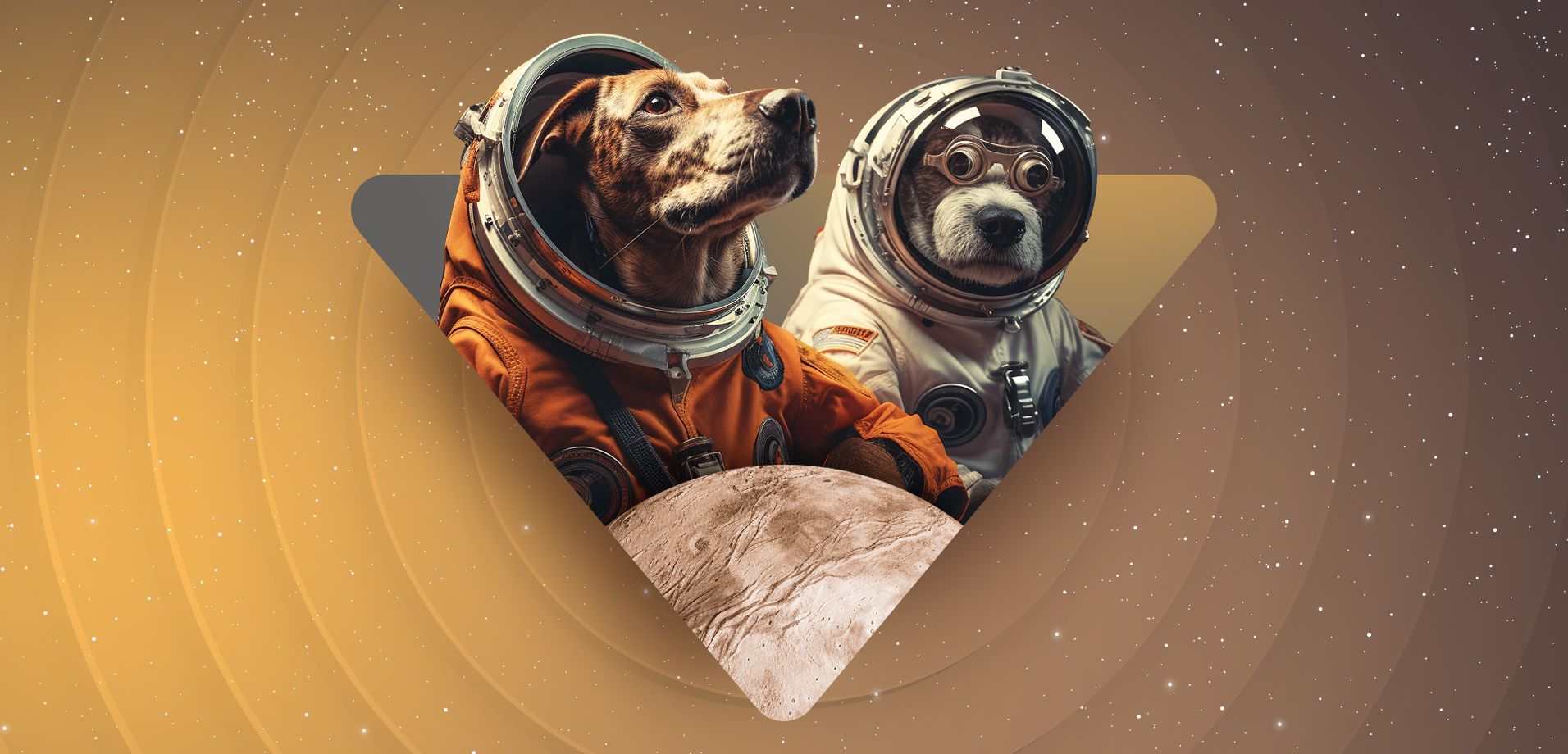
At the beginning of the space age, our four-legged friends — dogs — played an important role in space exploration. At the cost of their lives, they paved the way for us to this stellar infinity. Let’s find out how dogs were selected and trained, who was the first dog in space, how many astronaut dogs were there, how many of them died, and which dogs were successful in their space missions.
Why was a dog put into space?
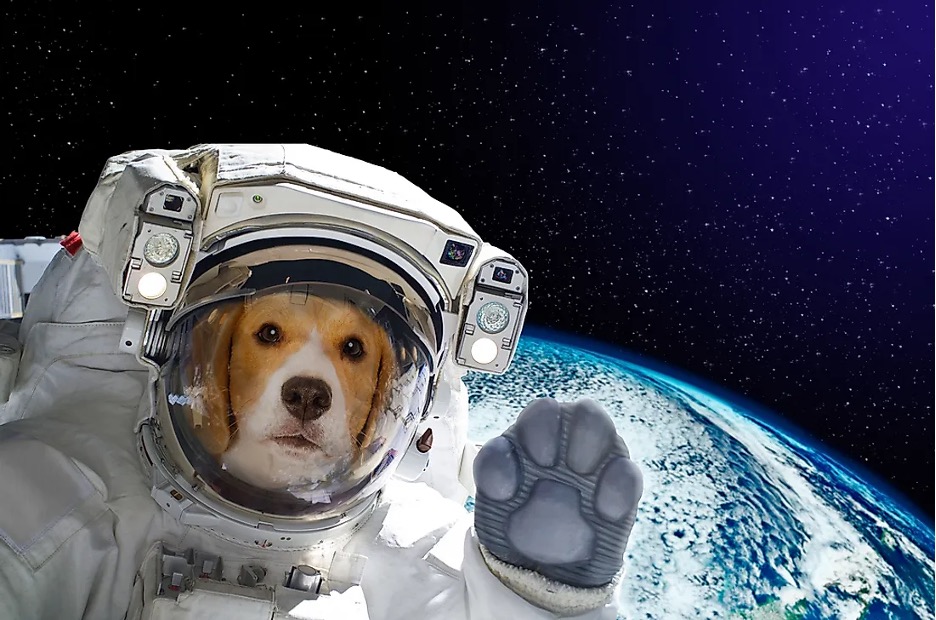
Today, we are so accustomed to the idea of astronauts on space stations and even walking on the Moon that it is difficult for us to believe that there was once a serious fear among scientists that space could be deadly for living things. To find out if that was true, fruit flies and corn kernels were sent into space in February 1947. But this was not enough to get the answers about space survival odds.
What was needed were mammals that were similar in physiology to humans, that would be smart enough, well adapted to long-term inactivity, and could easily adapt to environmental conditions. Soviet scientists decided to send dogs into space. One could have chosen rats and mice, but dogs looked more impressive as space passengers, and the Americans had already experimented with primates.
Jumping ahead, we will say that the calculation paid off. Unlike monkeys, dogs turned out to be more resistant to colds and more amenable to training.
Although the public reacted to such experiments with hostility (since many animals died), sending the first dog into space played a key role in preparing for manned spaceflight. Our four-legged friends helped us understand the effects of weightlessness and solar radiation on living organisms to mitigate these threats, as well as identify and eliminate problems and shortcomings of life support and technical spacecraft systems and space flight procedures. In other words, astronaut dogs, even if at the cost of their own lives, protected the lives of dozens of human astronauts.
Who would be in the canine space squad: selection criteria
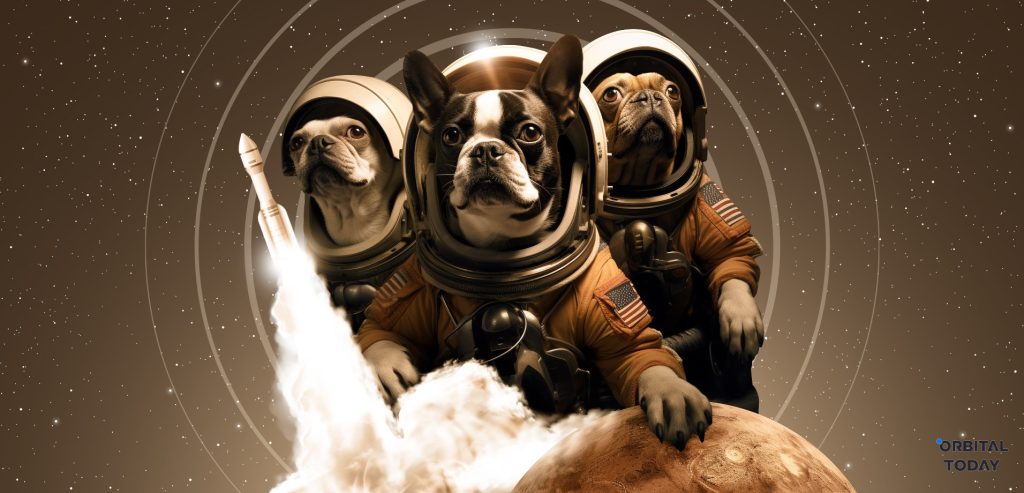
Purebred dogs were immediately excluded because they were too pampered. For the experiments, more tenacious mongrels and stray dogs were chosen. After much discussion, it was decided to send two animals at once to obtain more objective results.
Since the future capsule was limited to a volume of 0.28 m3, the space dogs had to be small in size and weight: up to 6 kg in weight and up to 35 cm in height. It was also important that the dogs were white or bright in coat colour — this compensated for the lack of contrast when filming them in the poor lighting of the space capsule.
Finally, the dog in space had to be short-haired and necessarily a female — the hair did not interfere with the sensors on the body, and it was easier to design the space suit specifically for bitches since they do not raise their paws to relieve themselves. In addition, she-dogs are less emotional and aggressive, which, in the cramped conditions of the space capsule, allowed them to get along with each other better.
Who was the first dog in space?
Many believe that the Soviet dog Laika was the first dog in space. But it is not so. In 1957, Laika became the first astronaut dog to be launched into Earth orbit. But there were 36 dogs sent to space before her!
Suborbital dogs
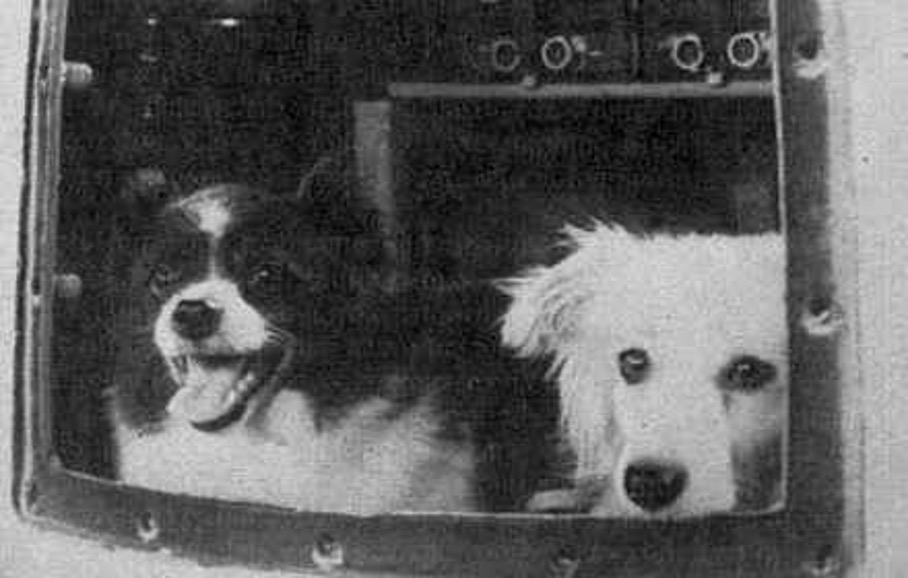
On July 22, 1951, for the first time in history, the Soviet dogs Tsygan (Gypsy) and Dezik went on a suborbital flight, which took two years to prepare for. The B-1B geophysical rocket, created based on the famous V-2, rose along a ballistic trajectory to a height of almost 89 km, after which the passenger capsule successfully separated and began its descent. At an altitude of 3 km from the ground, the capsule opened its parachute and landed. 32 minutes passed from launch to landing. The first four-legged astronauts survived without any harm.
The second space flight with Dezik and Liesa (Fox) occurred a week later. Desik was sent a second time to check how the dog would behave during repeated training and start. The rocket launched safely, but the parachute did not open at the appointed time. The capsule crashed, and Dezik and Liesa died. The cause was strong vibration, which disabled the pressure relay responsible for deploying the parachute at a given altitude. The death of the dogs caused serious worries for General Designer Sergei Korolev. After this, it was decided to develop an emergency ejection system from a rocket in case of an emergency.
Suborbital flights with dogs continued until 1961. A total of 29 space missions were carried out, in which 36 astronaut dogs took part. 15 of these dogs died.
Laika: the first dog-astronaut sent to orbit

On October 4, 1957, the Soviets launched the first artificial satellite into orbit. Without exaggeration, this event shocked the entire world. Soviets were in a hurry to consolidate their space success, so a month later, on November 3, 1957, the first animal was sent into orbit on Sputnik 2 — a dog named Laika.
Why did Laika go to space?
Three out of ten dogs competed for the first space flight: Albina, Mukha, and Laika. Albina seemed to be the top contender — at that time, she had already made two suborbital flights, but she became pregnant and was spared; Mukha was discarded because of the slight curvature of her paws, which would not have looked picture-perfect.
Why ‘Laika’?
The nickname “Laika” does not refer to the dog breed of the same name. Like any other Soviet dog astronaut, Laika was a common mongrel whose real name was Curly. But it was an unfortunate nickname to appear in reports about such an epoch-making event because the Soviet space mission was not only scientific but also political and was supposed to create an appropriate image for the Soviet rocket and space industry. During the radio interview, the dog barked often and loudly, so it was decided to name her Laika (Barker).
What happened to the dog the Soviets sent into space?
The launch of Sputnik 2 was successful, and telemetry data showed that Laika coped with the overloads well. The dog’s electrocardiogram did not show any pathologies, her pulse dropped from a peak during lift-off, although three times slower than in ground-based experiments. But the dog died in space after 5 hours of flight, having made only four orbits around the Earth.
The cause was an error in calculating the satellite’s area and the lack of a thermal control system, which caused the temperature in the space capsule to quickly rise to 40°C. The dog died from overheating, fear, and stress. Sputnik 2 itself made 2,370 orbits around the Earth and burned up in the atmosphere on April 14, 1958.
Why couldn’t they bring Laika back?
The return of the dog was not foreseen since, at that time, the Soviets had not yet developed the technology for returning from orbit. Laika was supposed to live on board for seven days. The air regeneration device on the space vehicle was designed to last exactly that long. For the dog’s nourishment, a machine opened the lid of a container with food and water twice a day.
Soviet media announced that Laika survived and stayed safe and sound for four days and was put to eternal sleep with poison in her last meal. It was only in 2002, forty-five years after the flight, that the Russians admitted there was a problem with the spacecraft. The false reports were an attempt to minimise the negative press the Soviets received for deliberately sending a dog into space to die. The New York Times, in its November 5, 1957 issue, called Laika “the world’s shaggiest, loneliest, and most miserable dog.”
The first dogs, that survived in space: Belka and Strelka
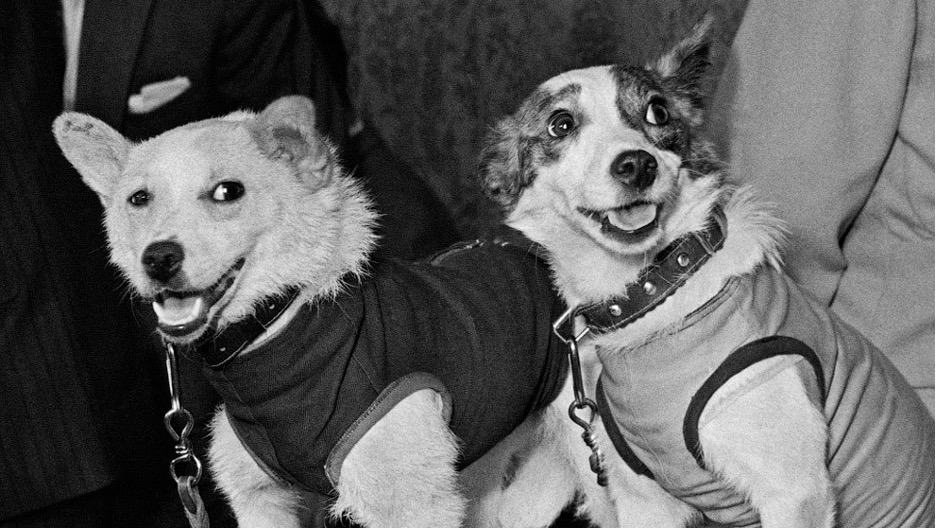
On August 19, 1960, Belka (“Squirrel”) and Strelka (“Little Arrow”) became the first dogs sent to space to orbit the Earth and who returned home safely. They performed a 24-hour space flight (17 turns around the Earth). Strelka felt fine throughout the flight, but Belka, on the fourth orbit, started barking, tried to get out of the suit, and vomited. Data analysis on Belka’s condition influenced the duration of Yuri Gagarin’s flight into space. It was decided to reduce it to one revolution around the Earth’s orbit.
Back on Earth, both dogs became famous, and Strelka went on to have six puppies, one of which was named Pushinka (“Fluffy”) and was given as a present to American President John F. Kennedy’s family in 1961. However, the Cold War intervened. When Pushinka arrived at the White House, the children were not allowed to play with the dog, and she was immediately sent for examination to the CIA and later to Walter Reed Hospital. The Secret Service was convinced that the dog had been implanted with a device to spy on the President’s activities or, worse, with some kind of deadly biological implant that could infect the presidential family and White House staff. Fortunately, the dog’s examination found nothing, and Pushinka was returned to the White House.
According to the notes in Duncan Geere’s database, “a Cold War romance bloomed between Pushinka and Kennedy’s dog named Charlie, resulting in the birth of four pups that JFK referred to jokingly as pupniks.”
Were there any American dogs in space?
The Americans never launched a dog into space; they chose primates as the closest to humans in physiological characteristics and behaviour. The US experimented with sending primates to space from 1948 to 1985. These were mainly macaques, squirrel monkeys, and chimpanzees. In fact, they could have just as easily used dogs for space experiments, but Laika’s death caused great public outrage, and the US did not want to repeat the Soviets’ mistake. However, American animal astronauts also died in space.
Obviously, no person would enjoy reading about a monkey being killed in an experiment, but no few people live with a monkey. As for dogs, people subconsciously associate them with their own pets, so the dog who died in space makes a deeper impression on people. NASA needed public support, and they simply couldn’t afford to kill any dogs in space.
Who was the last dog in space?
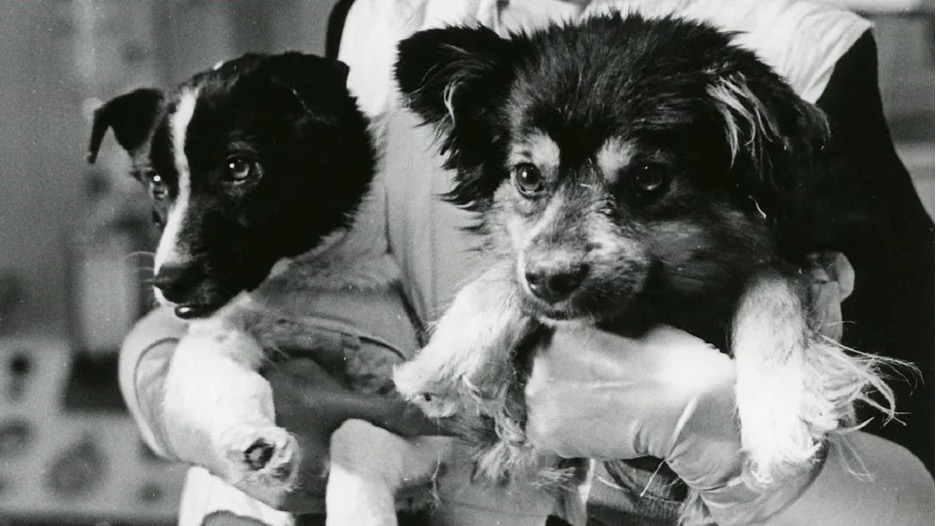
On February 22, 1966, as part of a project to prepare a long-term manned spaceflight, two Soviet dogs Veterok and Ugolyok set off on the last and longest canine space expedition in history. This space flight took place in Cosmos 110 and lasted 23 days.
The dogs survived but returned from space extremely exhausted, with fur worn down to the skin and bedsores. They were unable to stand and were severely dehydrated. However, after some time, their condition recovered. Subsequently, they gave birth to healthy offspring and lived in the vivarium of the Institute of Aviation and Space Medicine until the end of their days.
How many dogs have been in space in total?
From 1951 to 1966, 48 Soviet and 2 Chinese dogs were sent into space. A total of 39 space animal flights were made, 31 suborbital and 8 orbital. 12 dogs flew twice, four — three times, and Otvazhnaya (Courageous) – 5 times!
How many dogs died in space?
20 in total: 15 Soviet dogs died in suborbital space flights and five in orbital ones.
The end of the dog-astronauts era
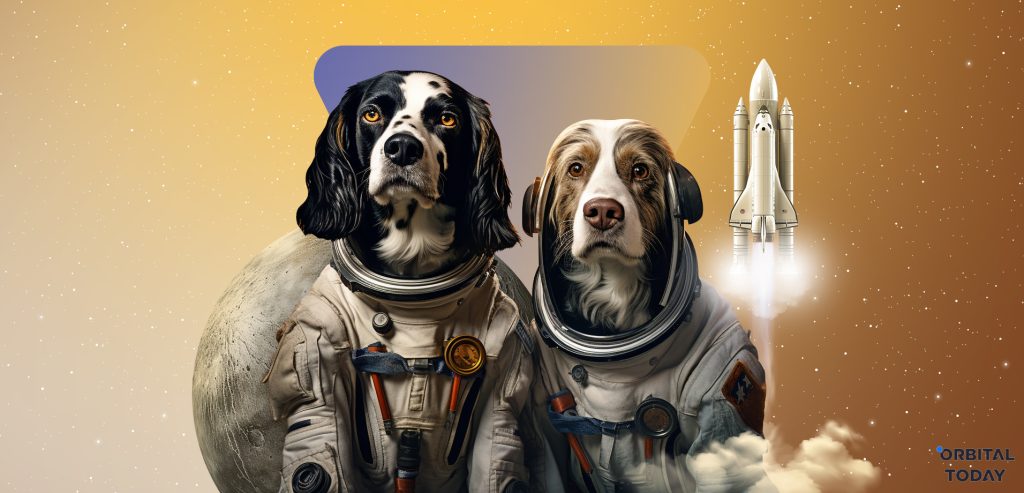
After 1966, the Soviet canine spaceflight programme was closed. The official line was that enough research had been made to suggest that mammals could safely live and work in space conditions for extended periods. But there was another reason — a moral one.
Each death of a dog in space caused a storm of indignation towards the Soviet space programme, and this greatly damaged the image of the USSR as a space power. On the other hand, in the entire history of space exploration, the USSR lost only four cosmonauts in flights (against 14 American astronauts), and the Russians are very proud of this achievement. Can we assume that they owe this success to dogs? Probably, yes.
And although the first dog in space and her teammates are called “national heroes” in this exhibition, there is something ugly and violent about this memory, something devoid of the morality that the USSR lacked.
In the table below, you can see the statistics of all canid spaceflights.
List of suborbital dog flights
| № | Dogs | Flight Date | Mission Summary |
| 1 | Dezik and Tsygan (Gypsy) | 22 July 1951 | Success |
| 2 | Dezik and Lisa (Fox) | 29 July 1951 | The parachute didn’t open. Both died. |
| 3 | Chizhik and Mishka | 15 August 1951 | Success |
| 4 | Ryzhik (Red) and Smeliy | 19 August 1951 | Success |
| 5 | Chizhik and Mishka | 28 August 1951 | Both died of asphyxiation due to space cabin depressurisation |
| 6 | Neputeviy (Scampish) and ZIB | 3 September 1951 | Success. ZIB is a Russian acronym meaning “Substitute for Missing Bobik”, another dog tasked with the space mission but ran away a few days before. |
| 7 | Lisa- 2 and Ryzhik-2 | 24 June 1954 | At an altitude of 75-80 km, the Fox was ejected. The space capsule with Ryzhik shot off at an altitude of 45 kilometres. Both survived |
| 8 | Damka and Mishka-2 | 2 July 1954 | Almost immediately after the space launch, the rocket deviated from its vertical course sideways. The stabilisation rudders brought the rocket sharply back to its original position. The impact was so strong that the two capsules with the dogs broke through the body of the rocket and fell to the ground. The dogs were killed. |
| 9 | Damka and Ryzhik-2 | 7 July 1954 | Ryzhik died. |
| 10 | Lisa-2 and Bulba (Bubble) | 5 February 1955 | The launch was successful, but the recovery failed and both dogs were killed. |
| 11 | Rita and Linda | 25 June 1955 | Rita died. |
| 12 | Knopka (popper) and Malyshka (baby girl) | 4 November 1955 | Success |
| 13 | Malyshka and Milda | 31 May 1956 | Success |
| 14 15 | Albina and Kozyavka (two flights in a row) | 7 and 14 June 1956 | Success |
| 17 | Dzhoyna and Ryzhaya | 24 May 1957 | Both died due to space cabin depressurisation |
| 18 | Belka and Modnitsa | 25 August 1957 | Mishka died, and Damka returned from space safely. |
| 19 | Belka and Damka | 31 August 1957 | Success. Belka was under anaesthesia during the space flight. |
| 20 | Belka and Modnitsa | 6 September 1957 | Success. Modnitsa was under anaesthesia during the flight. |
| 21 | Palma and Pushok | 21 February 1958 | Both died due to cabin depressurisation |
| 22 23 | Kusachka (Biter) and Palma (two flights in a row) | 2 and 13 August 1958 | Success |
| 24 | Belyanka (whitefly) and Pestraya (motley) | 27 August 1958 | Space flight to an altitude of 453 km. Success |
| 25 | Knopka-2 and Zhulba | 31 October 1958 | Success. Belka’s name means “squirrel,” and Modnitsa means “fashionable,” Belka was under anaesthesia during the flight. |
| 26 | Kusachka (Otvazhnaya) and Snezhinka (Zhemchuzhnaya) | 2 July 1959 | Success. Otvazhnaya means brave, and Zhemchuzhnaya means pearly |
| 27 | Otvazhnaya and Zhemchuzhnaya | 10 July 1959 | Success |
| 28 | Otvazhnaya and Malyok (fry) | 15 June 1960 | Success |
| 29 | Palma-2 and Malyok | 16 September 1960 | Success |
| 30 | Xiao Bao, “Little Leopard” | 14 July 1966 | First Chinese dog male in space. Success |
| 31 | Shanshan, “Coral” | 28 July 1966 | First Chinese dog female in space. Success |
List of orbital dog spaceflights
| № | Dogs | Flight Date | Mission Summary |
| 1 | Laika | 3 November 1957 | The ventilation system failed and the dog died 5-7 hours after the start from stress and overheating |
| 2 | Lisichka and Bars (Chaika) | 28 July 1960 | 19 seconds after launch, the rocket exploded, killing both dogs. Lisichka was a favourite of Soviet General Space Designer Korolev |
| 3 | Belka and Strelka | August 19, 1960 | Success. Belka and Strelka became the first dogs to make a one-day orbital space flight and return safely. Some time after landing, Strelka brought six healthy puppies, one of which was sent as a gift to US President John F. Kennedy’s wife Jacqueline and their daughter Caroline. |
| 4 | Mushka and Pchelka | December 1, 1960 | Mushka (little fly) and Pchelka (little bee) successfully spent a full day in orbit, as Belka and Strelka had. But at the final stage of deorbiting, due to the failure of the stabilisation system of the braking propulsion system, the descent trajectory changed, which threatened to land on the territory of another country. The descent vehicle was detonated by the automatic object detonation (AED) system and both dogs perished. |
| 5 | Shutka and Kometa | December 22, 1960 | Some time after the launch, the space launch vehicle was deflected off course due to the destruction of the third stage gas generator. It was clear that it would not go into space. At an altitude of 214 kilometres, there was an emergency separation of the descent vehicle, which landed in the area of the famous Tunguska meteorite. Both dogs were safely recovered. |
| 6 | Chernushka (blacky) | March 9, 1961 | Success. Chernushka went into orbit with a unique travel partner. Rather than journeying with a fellow pooch, she was accompanied by a mannequin named Ivan Ivanovic. |
| 7 | Zvezdochka (little star) | March 25, 1961 | The dog’s name was Udacha (Luck), but the first cosmonaut Yuri Gagarin gave her the name Zvezdochka before the launch. Like her predecessor, she flew with a mannequin (Ivan Ivanovic again), orbited, and was safely recovered from space. It was only 18 days before the first man flew into space. |
| 8 | Ugolyok and Veterok | February 22, 1966 | Success. The two dogs survived a 22-day flight. |
Sources:
- Robert Lewis. “Laika. Soviet dog cosmonaut” https://www.britannica.com/topic/Laika
- Bruce Dorminey “The Case Against Sending Animals Into Space” 2019 https://www.forbes.com/sites/brucedorminey/2019/11/07/the-case-against-sending-animals-into-space
- NASA. A Brief History of Animals in Space https://history.nasa.gov/animals.html
- Chris Dubbs. “Space Dogs: Pioneers of Space Travel” 2003 https://www.amazon.com/Space-Dogs-Pioneers-Travel/dp/0595267351
- Soviet Space Dogs database https://www.airtable.com/universe/expG3z2CFykG1dZsp/soviet-space-dogs
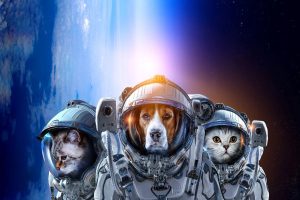
![[UPDATED] AX-3 Mission Successfully concluded The Axiom Space’s Longest Private Spaceflight [UPDATED] AX-3 Mission Successfully concluded The Axiom Space’s Longest Private Spaceflight](https://orbitaltoday.com/wp-content/uploads/2023/11/Liftoff_of_Axiom_Mission_3-300x169.png)

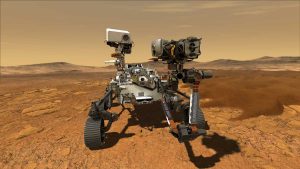


Thank you for your comment! It will be visible on the site after moderation.